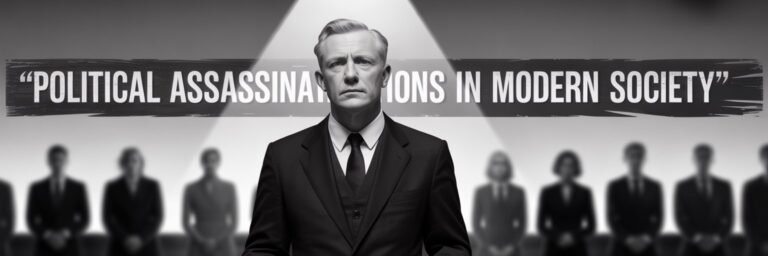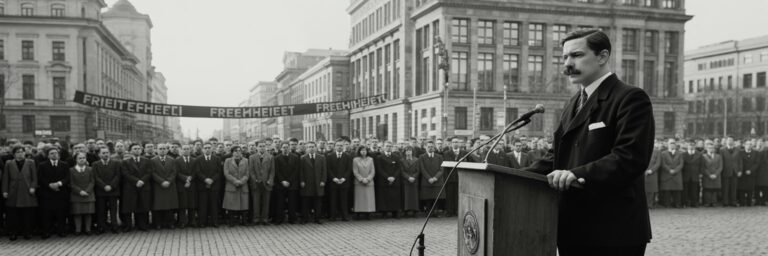INTRODUCTION
The annals of political history, for better or worse, are brimming with a series of ignominious acts, with political assassinations being one of the most shocking deeds under scrutiny. Political assassinations present a dimension of political activity entangled with passion, violence, and the eruption of unrest. This striking fallout is often given shape and credence under the influence of key figures, individuals who stand as turning points in this historical narrative. In this comprehensive piece centered on such influential personalities, we acquaint ourselves with the dark chapters of political history that have been sealed by assassinations.
HISTORICAL BACKGROUND
Political assassinations are not unique to any era or regime. In 44 BC, the leader of the Roman Republic, Julius Caesar, was assassinated by Brutus and his fellow conspirators, catalyzing the end of the Roman Republic and the dawn of the Roman Empire. Fast forward to the 20th century – we witness the assassinations of Archduke Franz Ferdinand which sparked World War I, Mahatma Gandhi who led India to independence, Martin Luther King Jr. who fought for Civil Rights in America, and even the controversial figures such as Adolf Hitler who escaped several assassination attempts.
While these events are disparate in time and space, there are common themes that transcend the temporal and geographical boundaries. As political killings, they encompass the clash of ideologies, the underlying power struggles, and the desperation for regime change or suppression of an opposing force.
THEORIES AND INTERPRETATIONS
Emanating from such magnanimous occurrences, several theories and interpretations have surfaced across time, intending to accurately depict the circumstances and key individuals involved. Many academic theories revolve around the psychological, ethical, and ideological motivations behind these violent acts.
For instance, Max Weber, a sociologist, introduces the theory of ‘Charismatic Authority’, explaining how the killing of charismatic leaders leaves an irreplaceable void. The assassination of figures like Martin Luther King Jr. and Mahatma Gandhi supports this theory, revealing the immediate socio-political destabilization that follows the death of such charismatic leaders.
Sigmund Freud’s psychoanalytic interpretations also provide a lens into the mindset of the assassin. Freud suggests that assassinations can be perceived as an extension of a violent super-ego, projecting internal hostilities onto external political figures. Case in point: Gavrilo Princip’s assassination of Archduke Franz Ferdinand aligns with this Freudian interpretation – the act projected an internal hostility against Austro-Hungarian dominance.
MYSTERIES AND CONTROVERSIES
Political assassinations are rarely devoid of intricate controversies and unresolved mysteries. The assassination of President John F. Kennedy in 1963 left behind a plethora of questions and controlled-chaos. Lee Harvey Oswald, often attributed as the sole assassin, has always had his role questioned with conspiracy theories speculating the involvement of other parties like the CIA or the mafia. Similarly, the assassination of Robert F. Kennedy continues to be a subject of controversy, with theories pivoting on the role of a ‘second gunman’.
SYMBOLISM AND CULTURAL SIGNIFICANCE
Political assassinations often lend themselves to symbolism and cultural significance, marking transformative epochs in history. The assassination of Julius Caesar has evolved from a moment of political turmoil into a cultural motif representing betrayal, famously crystallized in Shakespeare’s play, “Julius Caesar”. Similarly, the assassination of Louis Mountbatten by the Irish Republican Army (IRA) stands as a potent symbol of Republican resistance during the Northern Ireland Conflict.
MODERN INVESTIGATIONS
In the pursuit of truth, modern investigations into political assassinations employ state-of-the-art forensic science, investigative journalism, and historical research. The assassination of Olof Palme, the Swedish Prime Minister, took over 34 years to solve, with the case eventually closed in 2020. DNA analysis, ballistics, and AI technology were key in the investigation and reflect the changing dynamics in solving assassination mysteries.
LEGACY AND CONCLUSION
The influential figures entangled in political assassinations cast long shadows over the corridors of our history. Beyond the violence and grief, they illuminate the power struggles and ideological divides of their respective eras. The legacy of political assassinations and the individuals involved carries an inescapable weight, shaping the course of nations and forging the world as we comprehend it today.
In conclusion, delving into political assassinations demands a study of influential figures that reside at the core of such tragic legitimacy. The exploration treads across the metaphysical landscapes of power dynamics, ideological struggles, cultural impact, and the quest for truth in the annals of the past. It reflects a somber yet important narrative about the lengths men go for power and control and the extraordinary routes history takes to keep these events alive in memory.






